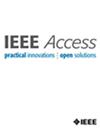用于精确和可扩展的模拟/混合信号原理图结构识别的自编码器增强图神经网络
IF 3.6
3区 计算机科学
Q2 COMPUTER SCIENCE, INFORMATION SYSTEMS
引用次数: 0
摘要
模拟/混合信号(AMS)原理图日益复杂,这给结构识别带来了重大挑战,特别是在知识产权(IP)行业,数据稀缺性和机密性限制了模型训练。在这项工作中,提出了一个新的框架,将卷积自编码器的生成增强能力与图卷积网络(GCNs)的结构分析能力相结合。从有限的专有数据中合成了实际的原理图变体,以增强模型的泛化,而GCN已用于捕获对子结构识别至关重要的拓扑特征。该方法已经在一个经过整理的AMS数据集上进行了验证,通过减少重建误差,该方法超过了仅使用gcn的基线,并实现了96.7%的平衡分类准确率,从而超过了长期存在的95%准确率阈值。在标准GPU硬件上测量了每个原理图5-10ms的推理延迟,证实了其适用于交互式工业电子设计自动化(EDA)工作流。这些结果突出了Autoencoder-GCN管道作为现实世界约束下AMS结构识别的可扩展和可靠解决方案的潜力。本文章由计算机程序翻译,如有差异,请以英文原文为准。
Autoencoder-Augmented Graph Neural Networks for Accurate and Scalable Structure Recognition in Analog/Mixed-Signal Schematics
The increasing complexity of Analog/Mixed-Signal (AMS) schematics has been posing significant challenges in structure recognition, particularly in the intellectual property (IP) industry, where data scarcity and confidentiality constraints limit model training. In this work, a novel framework has been proposed that combines the generative augmentation capabilities of convolutional Autoencoders with the structural analysis power of Graph Convolutional Networks (GCNs). Realistic schematic variants have been synthesized from limited proprietary data to enhance model generalization, while the GCN has been used to capture topological features critical to substructure recognition. The method has been validated on a curated AMS dataset, where it surpassed a GCN-only baseline by reducing reconstruction error and achieving a balanced classification accuracy of 96.7%, thereby exceeding the long-standing 95% accuracy threshold. Inference latency was measured at 5–10ms per schematic on standard GPU hardware, confirming its applicability to interactive industrial Electronic Design Automation (EDA) workflows. These results highlight the potential of the Autoencoder–GCN pipeline as a scalable and reliable solution for AMS structure recognition under real-world constraints.
求助全文
通过发布文献求助,成功后即可免费获取论文全文。
去求助
来源期刊

IEEE Access
COMPUTER SCIENCE, INFORMATION SYSTEMSENGIN-ENGINEERING, ELECTRICAL & ELECTRONIC
CiteScore
9.80
自引率
7.70%
发文量
6673
审稿时长
6 weeks
期刊介绍:
IEEE Access® is a multidisciplinary, open access (OA), applications-oriented, all-electronic archival journal that continuously presents the results of original research or development across all of IEEE''s fields of interest.
IEEE Access will publish articles that are of high interest to readers, original, technically correct, and clearly presented. Supported by author publication charges (APC), its hallmarks are a rapid peer review and publication process with open access to all readers. Unlike IEEE''s traditional Transactions or Journals, reviews are "binary", in that reviewers will either Accept or Reject an article in the form it is submitted in order to achieve rapid turnaround. Especially encouraged are submissions on:
Multidisciplinary topics, or applications-oriented articles and negative results that do not fit within the scope of IEEE''s traditional journals.
Practical articles discussing new experiments or measurement techniques, interesting solutions to engineering.
Development of new or improved fabrication or manufacturing techniques.
Reviews or survey articles of new or evolving fields oriented to assist others in understanding the new area.
 求助内容:
求助内容: 应助结果提醒方式:
应助结果提醒方式:


